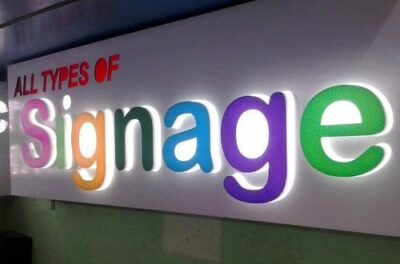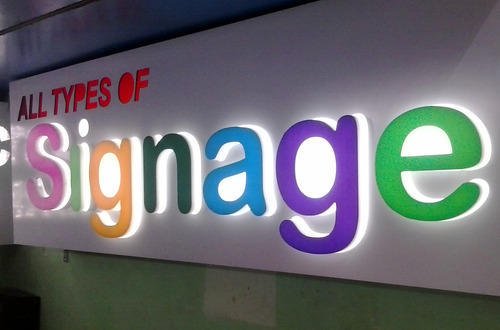5 Powerful Ways Signage Empowers Self-Service Customers and Enhances Satisfaction
In today’s fast-paced world, customers increasingly seek convenience, speed, and autonomy in their interactions with businesses. Self-service technologies, such as kiosks and interactive displays, have become pivotal in meeting these expectations. However, the effectiveness of these technologies heavily relies on well-designed signage that guides, informs, and reassures users throughout their journey. Effective signage not only facilitates seamless navigation but also significantly enhances customer satisfaction and loyalty.
In this extensive exploration, we’ll delve into five powerful ways that strategic signage empowers self-service customers, supported by industry insights, statistics, and real-world examples. By understanding and implementing these strategies, businesses can create environments that not only meet but exceed customer expectations, fostering lasting relationships and driving growth.
1. Reducing Confusion and Building Confidence
Navigating self-service options can be daunting for customers, especially when faced with unfamiliar technology or processes. Clear and intuitive signage plays a crucial role in demystifying these experiences, reducing confusion, and building user confidence.
The Challenge of Unfamiliarity
Imagine entering a large retail store equipped with self-checkout kiosks but lacking clear directions on their use. The absence of guidance can lead to hesitation, frustration, and even abandonment of the self-service option. Studies have shown that customers are more likely to engage with self-service technologies when they feel confident in their ability to use them effectively.
Signage as a Confidence Booster
Effective signage serves as a silent guide, offering step-by-step instructions and visual cues that simplify the self-service process. For instance, signs that read “Start Here” with arrows pointing to the initial step, or “Scan Your Items Here” placed above barcode scanners, provide clear directives that ease the user’s journey.
Key Elements of Confidence-Building Signage:
-
Clarity: Use simple language and legible fonts to convey messages.
-
Visibility: Position signs at eye level and in well-lit areas to ensure they are easily seen.
-
Consistency: Maintain uniform design elements across all signage to create a cohesive experience.
Real-World Example
A notable example is McDonald’s implementation of self-service kiosks. By incorporating clear, user-friendly signage, they have enhanced customer confidence and increased average transaction values by 20-30%.
2. Enhancing Speed and Efficiency
In the realm of self-service, time is of the essence. Customers opt for self-service options primarily to save time and avoid queues. Effective signage streamlines the process, enhancing speed and overall efficiency.
The Need for Speed
Customers expect quick and hassle-free experiences when using self-service technologies. Any delays or complications can lead to dissatisfaction and deter future use.
Streamlining Through Signage
Strategically placed signage can guide customers through the self-service process swiftly. Directional signs leading to kiosks, instructional signs detailing each step, and prompts for next actions reduce hesitation and keep the flow moving.
Strategies for Efficiency-Enhancing Signage:
-
Directional Arrows: Guide customers to self-service stations with floor decals or hanging signs.
-
Instructional Panels: Provide concise steps near the kiosk to assist users.
-
Feedback Prompts: Use signs that inform users of successful actions, like “Payment Accepted.”
Statistical Insight
Implementing self-service kiosks with effective signage has been shown to increase profits by 124% and elevate sales by approximately 7%.
3. Promoting Independence and Empowerment
Empowering customers to take control of their transactions fosters a sense of independence and satisfaction. Signage plays a pivotal role in promoting this empowerment by making self-service options accessible and user-friendly.
The Desire for Autonomy
Modern consumers appreciate the ability to manage their own experiences without relying on staff assistance. This autonomy not only enhances satisfaction but also encourages repeat usage.
Facilitating Self-Reliance Through Signage
Informative signage that anticipates user needs and addresses potential questions enables customers to navigate self-service options confidently. For example, signs that explain how to use a kiosk, troubleshoot common issues, or access additional assistance empower users to proceed independently.
Components of Empowering Signage:
-
Educational Content: Offer tips and best practices for using self-service options.
-
Reassuring Messages: Include statements like “Help is Available if Needed” to comfort users.
-
Multilingual Support: Provide instructions in multiple languages to cater to diverse clientele.
Case Study
Shake Shack’s expansion of self-checkout kiosks, accompanied by intuitive signage, resulted in customers spending 10% more per transaction.
4. Improving Accessibility and Inclusivity
Ensuring that self-service options are accessible to all customers, including those with disabilities, is not only a legal obligation but also a moral imperative. Signage contributes significantly to creating an inclusive environment.
Addressing Diverse Needs
Customers have varying abilities and requirements. Poorly designed signage can inadvertently exclude individuals with visual impairments, mobility challenges, or language barriers.
Inclusive Signage Solutions
Incorporating features such as braille, high-contrast colors, large fonts, and pictograms ensures that signage is comprehensible and usable by everyone. Additionally, positioning signs at appropriate heights and angles makes them accessible to individuals using wheelchairs.
Best Practices for Accessible Signage:
-
Braille and Tactile Elements: Include raised text and braille for visually impaired users.
-
High Contrast: Use contrasting colors to enhance readability.
-
Universal Symbols: Incorporate universally recognized icons to transcend language barriers.






